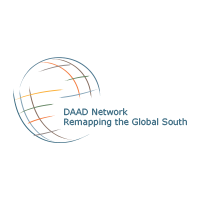Global Value Chains and Transnational Corporations: Local Effects of The Global Exchange of Products
Lead universities: UoC, SYSU and UWC
Prof. Dr. Javier Revilla Diez (UoC)
Prof. Dr. Li Xun (SYSU)
Prof. Dr. Andries Du Toit (UWC)
International trade and business link many parts of the world into globally operating networks. Through these linkages, commodities find their way from producers in the South to consumers in the North. With the movement of products comes the exchange of ideas, practices and people, supposedly shaping the world into one global village, though this is not likely to materialise automatically or without cost for the host country (Zanfei 2012).
Yet, international linkages, such as global value chains and transnational corporations (TNCs), can also have negative impacts and contribute to food shortages and rising food prices, dire working conditions and global inequality more generally. Additionally, when TNCs locate in a country, the spatial consequences can be immense. The spatial concentration of TNCs and activities of related firms and farmers might lead to new and/or accelerated migration flows, reinforcing urbanisation processes in urban, peri-urban and rural areas, thus changing the urban system of the whole country.
The collaboration we propose offers a good chance to explore the operations and effects of global value chains and TNCs in more detail, as our partners in South Africa, China, and Argentina have significant expertise on these subjects. Nevertheless, much about the detailed operation and the regional, national and global consequences remains unknown. Our collaboration should therefore be considered a perfect opportunity to exchange scientific expertise, often anchored in specific local settings.
We intend to focus on three aspects:
The first set of questions will analyse the impact of global value chains and TNCs on chain participants in the Global South, for example in terms of technology transfer and upgrading. On the one hand it is argued that TNCs which are increasingly of Global South origin could, through their entry into less advanced contexts, foster development and extend benefits to society as a whole by transferring of knowledge to their suppliers and the local settings in which they operate (e.g. Pietrobelli & Rabellotti 2011). There is, on the other hand, also a significant body of literature highlighting the risks and downsides involved in producers being locked into highly rigid value chain governance arrangements within which they have little power (e.g. Dannenberg & Nduru 2013).
The second set of questions centres on the consequences of global value chains and TNCs for regional disparities and urbanisation processes and will deal with the overall question as to whether these activities will lead to divergence or convergence. The mobility of workers, capital, and goods might, for example, reinforce existing urban hierarchies or create new growth centres, spurring rapid urbanisation processes in peri-urban or even in rural areas. However, it remains to be seen whether and to what extent global value chains and TNC will increase regional disparities or contribute to more balanced regional development (Fu, Revilla Diez & Schiller, 2012, Lin, Li, Yang & Hu 2014).
The third set of questions focus on agro-food value chains and their impact on producers, regions, and consumers. The integration into global agro-food chains is seen as an opportunity for countries in the Global South to exploit their comparative advantage in land and labour due to the increased global and national demand (fuelled by urbanisation, an emerging middle class etc.). But concentration and vertical integration within agro-food commodity chains can have adverse effects on the food security and the livelihoods of poor and vulnerable populations in the Global South. One set of dynamics relates to the development of powerful ‘lead firms’ that act as chain drivers, setting the terms for value chain participation by other role players (Gereffi, Humphrey & Sturgeon 2005, Kaplinsky 2000). In South Africa, for instance, this has gone hand in hand with processes of concentration and vertical integration, which lead to small producers and entrepreneurs being marginalised (du Toit & Neves 2013, Mather 2005). In addition, while concentration and vertical integration have helped drive costs down, they have also had adverse impacts on dietary quality, with rapidly urbanising populations in South Africa displaying a significant shift towards highly processed diets rich in added sodium sugars and fats, leading to a concomitant increase in diet-related non-communicable diseases such as diabetes and cardiovascular sickness (Igumbor et al. 2012).
